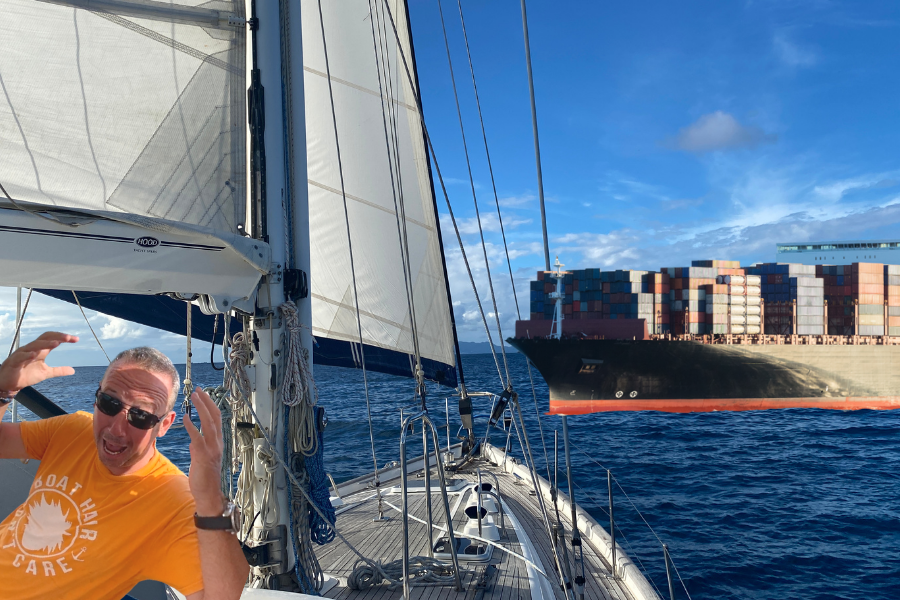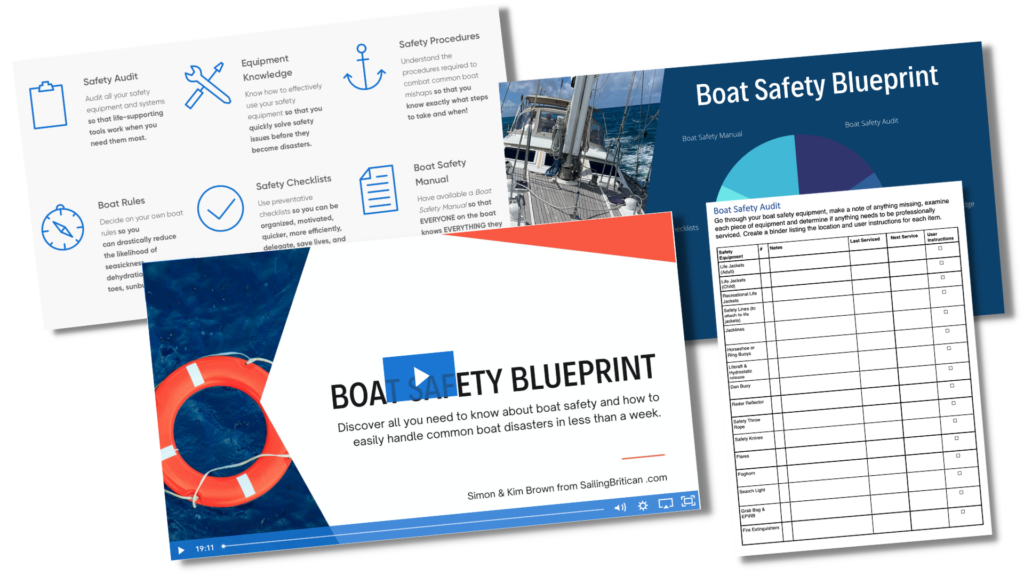One of the scarier things about navigating by sailboat is dealing with cargo ships and cruise liners. As you’ll see in our avoiding ship collisions video we offer a situation where things didn’t go to plan.
If you have an AIS system on your plotter navigating is easier because you know the CPA, or Closest Point of Approach, but even with full information things can get a little tricky. We have a set procedure for dealing with ships while sailing at day and during the night. Read our procedure here to determine if you’d like to adopt the same or similar: Avoiding Ship Collisions.
Avoiding Ship Collisions Video
Make sure to read our Avoiding Ship Collisions procedure and then let us know your thoughts. Do you handle ships differently? What do you do if you’re uncertain as to what a ship is doing? Leave your comments below.
Make Sure Your SAFE Before Heading Out To Sea!
Watch our Boat Safety Blueprint Video and get a copy of our Boat Safety Audit checklist. Request access here: Boat Safety Blueprint & Audit
Other Articles & Videos That You May Like


As both a professional ship captain and an avid sailor, I’d like to offer a couple of comments. Your ship encounter was quite risky and should have been handled much more decisively. You said you were going to go astern of the ship. The captain said OK and that he would call you back. At that point, you should have immediately altered your course to signal your intention to go astern. In fact, there was no need at all for the VHF call. Simply signal your intention by going astern. This is the most unambiguous form of communication at sea.
The ship was approaching the charted pilot boarding area. In this case, you need to be aware that the ship will quite likely be required by the pilot to alter course and / or speed for safe boarding. Rule 2 and established maritime case law requires other vessels to keep clear and give way to ships approaching the pilot boarding area if safe to do so.
Also, you were in the lee of the island and the weather was squally and unsettled. Your speed could have increased or decreased very suddenly, making it even more risky to cross the bow of the approaching ship.
When you were trying to call the second time on the VHF, the bridge team was most likely communicating with the pilot on another working channel. Don’t be surprised if a ship doesn’t instantly answer your hail.
On the open sea you should expect motor vessels to give way to sailing yachts under sail. Of course, you need to monitor the situation and it is appropriate to call the approaching ship if you are uncertain of their intentions. But when a ship is approaching a pilot boarding area, harbor entrance, narrow channel, etc., you should generally just keep clear.
read your COLREG you should take corrective action
Gotta say ( as ex-Navy),- my FIRST concern would have been my boat/crew;…..I would have taken evasive action the moment the ship was spotted, – and gone behind………regardless of the communications with the ship.
Regards,
Great video for new sailors like me. Firstly, how to deal with a tanker, but also how communication can become problematic and even a good video on how to use the radio to communicate. Thanks!
Very important. With a squall it can get dicey. Well done.
I am an ASA instructor who teaches near the Houston Ship Channel (one of the busiest in the world) and so encounter large ships on a daily basis. Here are some things you should consider:
1. Learn proper VHF procedures.
2. There is no “right of way”. There is a “give way”vessel” and a “stand on vessel”. You were the give way vessel.
3. Each vessel has a responsibility. As the give way vessel your responsibility is make an early and obvious course change to signal to the stand on vessel that you are giving way. You normally change course to pass astern of the stand on vessel.
4. There was absolutely no need to be close to this vessel. You had more than sufficient time to plan an avoidance heading.
5. You may have thought this was a good video on how to handle larger vessels; instead it was a good video on how NOT to handle large vessels.
4. You should NOT have maintained course and speed – that is the responsibility of the stand on vessel.
Hey Captain Bart. I am a very good and experienced sailor with over 40,000 nautical miles crossing oceans and passing hundreds and hundreds of large ships. I think you missed the point of the video. The whole thing was produced to show what NOT to do. It was also to show that miscommunciations can happen. Further, it was to show that we are all human and we make mistakes no matter how qualitied or experienced we might be. Kim